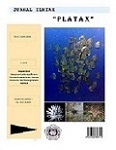Land Suitability and Capability For Mariculture Utilization of Coastal Area of Manado Tua Island
DOI:
https://doi.org/10.35800/jip.8.2.2020.31272Keywords:
land suitability, aquaculture, freshwater utilization, Manado Tua IslandAbstract
The concept of land suitability and carrying capacity in utilizing the coastal land area of Manado Tua Island is a long-term goal in the study of sustainable coastal and small island management. Meanwhile, alternative livelihoods for sustainable aquaculture food sources are a special target. The potential of freshwater supply becomes a limiting factor for small islands, in addition to land availability. The special objective is the use of aquatic land as aquaculture land which has an impact on alternative livelihoods and the availability of food sources. The land suitability analysis is carried out in the following stages: (1) preparing a map of the Manado Tua Island area, (2) creating a matrix for the suitability of aquaculture activities, (3) providing weighting and scoring, and (4) conducting spatial analysis. The biogeophysical conditions of the coastal waters of Manado Tua Island are classified as normal for mariculture cultivation activities. Geographically the island is located at coordinates 01º 37 '57 "North Latitude and 124º 41" 56 "East Longitude. The very suitable location I was 44.03 m2, while the suitable land was 34.25 m2, and the conditionally suitable land was 17.13 m2. For location II, the area that fully meets the requirements is 70.50 m2, and those that meet the appropriate requirements are 49.86 m2, and those that meet the conditionally are 27.51 m2. The land area of Manado Tua Island is 1,056.02 ha. The condition of freshwater sources has not yet the potential to meet the needs of the community and visiting tourists.
Keywords: land suitability, aquaculture, freshwater utilization, Manado Tua Island
Abstrak
Konsep kesesuaian lahan dan daya dukung dalam memanfaatkan areal lahan pesisir Pulau Manado Tua merupakan tujuan jangka panjang dalam studi pengelolaan pesisir dan pulau kecil secara berkelanjutan. Sedangkan alternatif mata pencaharian untuk sumber pangan hasil budidaya perairan secara berkelanjutan menjadi target khusus. Potensi sediaan air tawar menjadi faktor pembatas pulau kecil, disamping ketersediaan lahan. Adapun tujuan khusus adalah pemanfaatan lahan perairan sebagai lahan budidaya perikanan yang berdampak pada alternatif mata pencaharian serta ketersediaan sumber bahan pangan. Analisis kesesuian lahan dilakukan dalam tahapan: (1) penyusunan peta kawasan Pulau Manado Tua, (2) membuat matriks kesesuaian kegiatan budidaya perikanan, (3) memberikan pembobotan dan pengharkatan, dan (4) melakukan analisis spasial. Kondisi biogeofisik perairan pantai Pulau Manado Tua tergolong normal untuk kegiatan budidaya matrikultur. Secara geografi Pulau terletak pada koordinat 01º 37’ 57†LU dan 124º 41’ 56†BT. Pada lokasi I yang sangat sesuai seluas 44,03 m2, sedangkan lahan yang sesuai seluas 34,25 m2 dan lahan yang sesuai bersyarat seluas 17,13 m2. Untuk lokasi II areal yang sangat memenuhi syarat adalah seluas 70.50 m2, dan yang memenuhi syarat sesuai adalah seluas 49,86 m2, dan yang memenuhi sesuai bersyarat seluas 27,51 m2. Luas daratan Pulau Manado Tua 1.056,02 ha . Kondisi sumber air tawar di belum berpotensi untuk memenuhi kebutuhan masyarakat dan wisatawan yang berkunjung.
Kata kunci: kesesuaian lahan, budidaya perikanan, pemanfaatan air tawar, Pulau Manado Tua
References
Adrianto, L., 2004. Pembangunan dan Pengelolaan Pulau-Pulau Kecil yang Berkelanjutan (Sustainable Small Islands Development and Management). (Training on Integrated Coastal Zone Management), kerjasama antara Marine and Coastal Resources Management Project, Departemen Kelautan dan Perikanan dan PKSPL-IPB, Bogor. 25 hal.
APHA (American Public Health Association)., 1992. Standard Methods for the Examination of Water and Wastewater. American Public Health Association. Washington DC, 874p
BAKOSURTANAL., 1996. Pengembangan Prototipe Wilayah Peisir dan Laut Kupang, Nusa Tenggara Timur. Pusbina-Inderaja SIG. Bakosurtanal, Cibinong.
Beller, W.S., P. Ayala dan P. Hein., 1990. Sustainable Development and Environmental Management of Small Islands. UNESCO, Paris. P.23
Bengen, D.G. 2001., Teknik Pengambilan Contoh dan Analisis Data Biofisik Sumberdaya Pesisir. Sinopsis. Pusat Kajian Sumberdaya Pesisir dan Lautan. Institut Pertanian Bogor.
Clark, J.R., 1996. Coastal Zone Management. Handbook. CRC Press. Lewis Publishers. Florida.
Dahuri, R., 1997. Aplikasi Teknologi Sistem Informasi Geografis (SIG) untuk Perencanaan dan Pengelolaan Tata Ruang Wilayah Pesisir. Makalah disampaikan pada Pelatihan Pengelolaan Sumberdaya Pesisir dan Lautan. PKSPL-IPB.
Dahuri. R., 2000. Analisi Kebijakan dan Program Pengelolaan Wilayah Pesisir dan Pulau-pulau Kecil. Makalah disampaikan pada Pelatihan Manajemen Wilayah Pesisir. Fakultas Perikanan dan Kelautan IPB. Bogor.
Dinas Hidrologi dan Oseanografi., 2004. Daftar Pasang Surut Kepulauan Indonesia. TNI AL. Jakarta.
Falkland, A., 1991. Hydrology and Water Resources of Small Islands : a practical guide. Published by UNESCO, Paris.
Gunawan. I., 1998. Typical Geographic Information System (GIS) Applications for Coastal Resources Management in Indonesia. Jurnal Pesisir dan Lautan SPL-IPB.
Jamil. S., 2005. Kajian Kesesuaian Lahan dan Kelayakan Ekonomis Pengembangan Budidaya Perikanan Pesisir di Pulau Tanakeke, Sulawesi Selatan. Tesis IPB 131 hal.
KepMenNeg. LH No.51., 2004. Baku Mutu Air Laut untuk Biota Laut dan Wisata Bahari
Nybakken, J.W., 1992. Biologi Laut: Suatu Pendekatan Ekologis. PT. Gramedia, Jakarta.
Odum, E.P., 1989. Ecology and Our Endangered Life-support Systems. Sinaeur Associates, Inc, Publ, Sunderland, Massachusett
Downloads
Published
How to Cite
Issue
Section
License
COPYRIGHT
Authors who publish with this journal agree to the following terms:
Authors hold their copyright and grant this journal the privilege of first publication, with the work simultaneously licensed under a Creative Commons Attribution License that permits others to impart the work with an acknowledgment of the work's origin and initial publication by this journal.
Authors can enter into separate or additional contractual arrangements for the non-exclusive distribution of the journal's published version of the work (for example, post it to an institutional repository or publish it in a book), with an acknowledgment of its underlying publication in this journal.
Authors are permitted and encouraged to post their work online (for example, in institutional repositories or on their website) as it can lead to productive exchanges, as well as earlier and greater citation of the published work (See The Effect of Open Access).




















